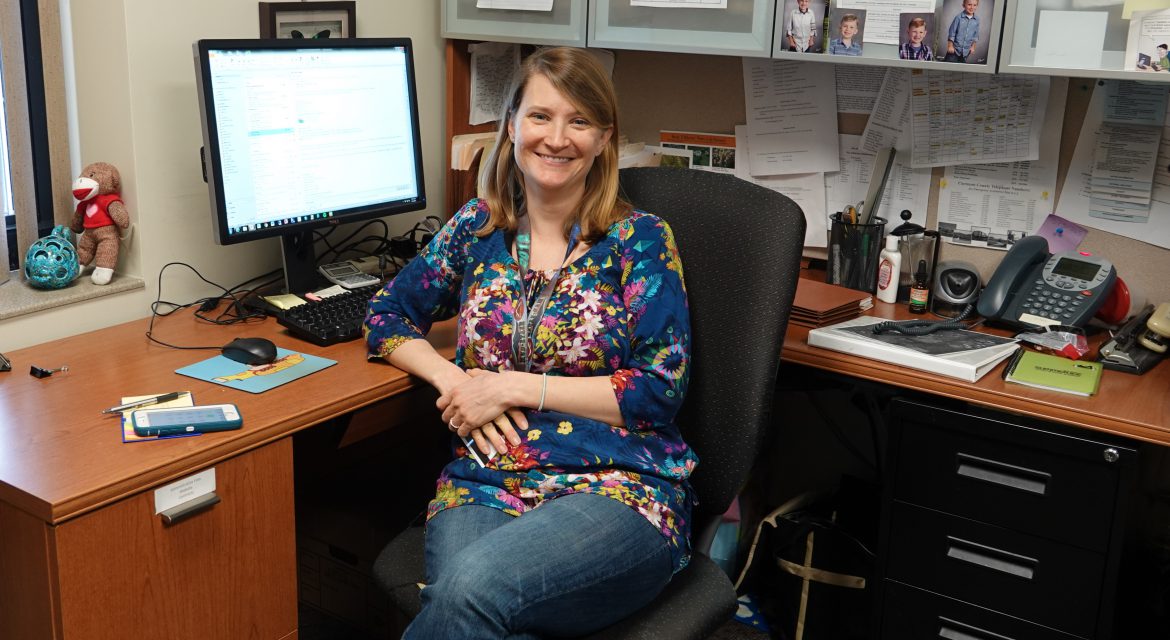
BATAVIA, Ohio (Feb. 26, 2019) – Hannah Lubbers, the new director of the Clermont County Office of Environmental Quality (OEQ) and the Adams-Clermont Solid Waste District, came by her love of the outdoors naturally.
Growing up in the City of Hamilton, she and her family enjoyed hiking and canoeing, at Hueston Woods and the Whitewater River in Indiana.
Lubbers was hired by Paul Braasch, the recently retired director of both offices, almost 11 years ago, as a program manager for the OEQ. She had just completed her Masters in biology at the University of Cincinnati. Her undergrad degree at UC was in environmental studies.
“I started as a chemistry major in college,” she said. “I took a class in environmental policy and I got interested in environmental studies – where policy and science intersect.”
That was perfect for her new job, where she specialized in understanding the watershed of the East Fork of the Little Miami River, and studying best management practices (BMPs) that would help farmers to decrease nutrient runoff.
The Office of Environmental Quality is one of the members of the East Fork Watershed Cooperative, an organization comprised of federal, state and county stakeholders that has conducted extensive research on the watershed to improve water quality.
When she began her work, Lubbers said, “We were more focused on wastewater effluent in streams. But local water quality data showed that runoff from agriculture also significantly impacted water quality.”
Partners in the East Fork Watershed Cooperative, including the USDA’s National Resources Conservation Service (NRCS), and the Clermont County Soil & Water Conservation District, have been crucial to enlisting county farmers to use methods, such as planting cover crops and installing biological treatment systems, that lessen nutrient runoff.
And the unique nature of the cooperative has allowed it to pull in state and federal funding, Lubbers said. More than $3 million in grants to Clermont and Brown counties is funding cover crops and other BMPs, enough for 12,000 acres. In 2018, the NRCS allocated an additional $600,000 to the area to fund various agriculture projects, all in the service of improving the quality of water in the watershed.
Lubbers wears another hat as director of the Adams-Clermont Solid Waste District. “My primary goal is to ensure the sustainability of recycling,” she said. In 2018, the Solid Waste District helped Batavia, Ohio and Williamsburg townships secure curbside recycling via waste franchising to over 8,000 households.
“I want to make sure that all county residents maintain access to recycling,” she said. Currently, residents of Union Township, the largest township in Clermont County, have limited curbside recycling opportunities. There are also no drop-off sites in Union Township; several drop-off sites throughout the county have been closed because of illegal dumping.
“One of our goals is to make sure that recycling is available at apartment complexes,” Lubber said. Once more townships adopt curbside recycling, and more apartments have recycling bins, there won’t be as great a need for the drop-off sites, she said.
Lubbers, who lives in Clermont County, loves its natural beauty. She loves and appreciates the rural nature of much of the county. And she wants to make sure that is preserved while the county continues to grow in jobs and population.
Litter – which mars so many of the roadways in the county — is one thing that gets to her. In 2018, an astounding 88 tons of litter was removed from rivers and streams in the county, much of it during the annual Spring Litter Clean-Up.
“There’s that phrase, ‘Think globally, act locally,’” Lubbers says “NOT littering, and picking up litter when you see it, is one way of acting locally. It doesn’t have to be your garbage – pick it up!”
#######